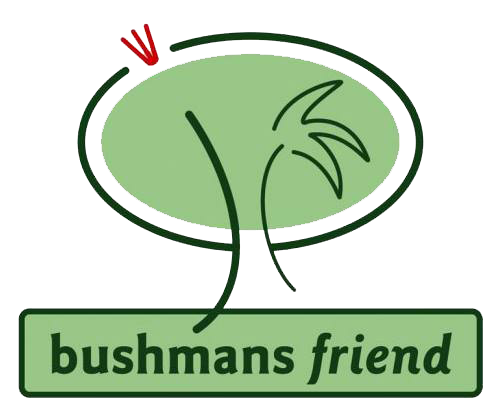
|
Gardener's Encyclopaedia of NZ Native Plants by Cave, Paddison Trees and Shrubs of New Zealand by Poole and Adams
Click picture for name and larger picture
| New Zealand plant flowers The primary function of flowers is attraction of a pollinator to transfer pollen to the female stigma. The pollen contains the male gamete that fertilizes the female ova to eventually produce a seed that once dispersed from the mother plant germinates into a new individual. The features and form of flowers is related to the characteristics of the pollinating fauna: birds, ants, bees, flies, moths. People’s basic empathy with this process is what helps make the allure and display of flowers so striking. The scent of the nectar and vibrant ‘look at me’ colours creates an attractive sight.
The bird pollinated New Zealand flowers are large and bright. The bright red flowers of Pohutukawa and Rata ablaze in summer, Sophora’s yellow bells singing the chorus of spring, Puriri’s year round display, Flax’s wind wands and all with petals and a flower architecture perfectly suited to pollination by native birds.
A characteristic of New Zealand flowers is that many New Zealand plants have small, white and inconspicuous flowers. The smaller flowers are adapted to pollination by insects or the wind. Small white or green flowers are the best way to attract the attention of a passing insect. White petals act as solar collectors, creating a warm micro-climate that encourages the small insect to visit on a chilly morning. In alpine plants, the flowers may be larger but are mostly white in colour. There is a lack of blue, purple and red hues in the NZ flowers and those that are brightly coloured are closely related to other members present in Australia and can be viewed as relatively recent arrivals. Less than 1% of NZ flowering plants are clearly adapted to bird pollinators compared to up to 15% of Australian plants.
The smaller flowers have adaptations that encourage visits by unspecialised pollinators. The flowers are often radially symmetrical, can be approached from any direction, and do not require the pollinator to undertake precise movements. The pollen and stigmas are freely exposed. In most parts of the world, bees are the most important group of insect pollinators and are noted for their precision, complexity, and diligence of operations. Advanced groups of Bees are lacking in New Zealand . The species of native bees are short tongued and primitive. Beetles, moths, flies, spiders and ants are all important pollinators. It is likely that the non-specific nature of the pollinators encourages self-pollination, which plants do not favour, as the offspring of self-pollination show little variety in offspring. To counter this, separation of the sexes (dioeciousness) is favoured. This means by having male and female flowers on separate plants a strategy to ensure cross-pollination is established. The small size of the new Zealand flowers is often offset by being massed into large dense inflorescences e.g. Hebe, Pimelia, and Compositae.
Dioecious plants have male and female flowers on separate plants. A characteristic of the the New Zealand flora is the high % of plants that have the sexes on separate plants (dioecious). Approx 12-13% of our flora are dioecious. (Britain 2-5%, South Australia , 3.9%., Hawaii 5%). Dioeciousness is related to unspecialised pollinators as in order to avoid self pollination, that is likely to occur if many insects can effect pollination, separation of the sexes is encouraged.
For more on New Zealand flowers check out this PDF powerpoint presentation on the Features of New Zealand Flowers
| SpecieAgathis australis Alectryon excelsa Alseuosmia banksii Aristotelia serrata Arthropodium cirratum Beilschmiedia tarairi Beilschmiedia tawa Brachyglottis repanda Carmichaelia Carpodetus serrata Coprosma Cordyline australis Cordyline banksii. Corynocarpus laevigatus Cyathodes fasciculata Dacrydium cupressinum Dacrydium kirkii Dianella nigra Dodonaea viscosa Dysoxylum spectabile Elaeocarpus dentatus Elingamita johnsonii Entelea arborescens Fuchsia excorticta Fuchshia procumbens Gaultheria Geniostoma ligustrifolium Hebe Hedycarya arborea Hoheria populnea Kunzea ericoides Laurelia novae zelandiae Lophomyrtus Libocedrus plumosa Leptospermum scoparium Knightia excelsa Macropiper excelsum Meryta sinclarii Melicope ternata Melicope simplex Melicytus ramiflorus Metrosideros excelsa Myoporum laetum Myrsine australis Nothofagus Phormium tenax Phyllocladus trichomanoides Prumnopitys Pittosporum Pisonia brunonnianum Podocarpus dacrydioides Colensoa physaloides Planchonella costata Pseudopanax Pseudowintera colorata Pomaderris kumaraho Rhabdothamnus solandri Rhopalostylis sapida Rubus Schefflera digitata Solanum aviculare Sophora microphylla Tecomanthespeciosa Toronia toru Vitex lucens Weinmannia Scenic New Zealand Blank Greeting Cards Classic Walks of Scenic New Zealand Book Rainbow Forest - A Magic Forest Walk - New Zealand Nature Sounds Music CD
Click photo for name and larger picture |
Articles